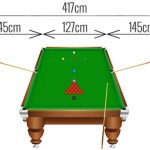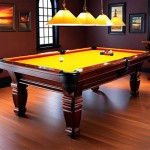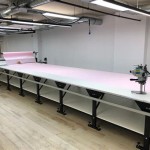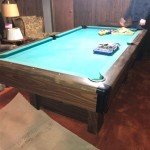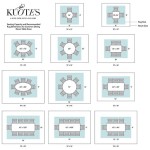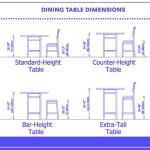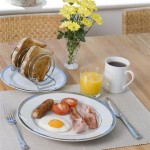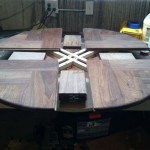Folding Sewing Table Plans: A Comprehensive Guide
A dedicated sewing space enhances both efficiency and enjoyment of the craft. However, not all individuals possess the luxury of a permanent sewing room. Folding sewing tables offer a practical solution, providing a stable work surface that can be conveniently stowed away when not in use. This article explores the realm of folding sewing table plans, offering insights into design considerations, construction methods, and material selection to aid in building a functional and adaptable workspace.
The versatility of folding sewing tables stems from their ability to transform from a compact, space-saving unit into a readily accessible crafting area. These tables are suitable for various environments, including apartments, shared living spaces, and rooms that serve multiple purposes. Furthermore, folding sewing table plans can be adapted to accommodate diverse sewing projects, from garment construction to quilting and embroidery.
Understanding Design Considerations
Prior to embarking on a folding sewing table project, it is essential to define specific needs and limitations. Careful consideration of the following design aspects will contribute to a successful outcome:
Dimensions: The dimensions of the unfolded table are crucial. Consider the size of typical sewing projects and the amount of workspace required. A larger surface area is beneficial for handling bulky fabrics or intricate patterns. Conversely, the folded dimensions must be minimized to facilitate storage in designated areas. Measure available space accurately to ensure the folded table fits comfortably. Determine the desired height of the sewing surface, taking into account personal ergonomics and seating preferences. Standard table heights typically range from 28 to 30 inches, but adjustments may be necessary for optimal comfort.
Folding Mechanism: The type of folding mechanism greatly influences the table's stability and ease of use. Common options include hinged tabletops supported by folding legs, drop-leaf designs with hinged extensions, and tables that fold completely flat. Hinges must be robust and capable of withstanding repeated use. Locking mechanisms are essential to secure the table in both the open and closed positions, preventing accidental collapses. Explore different hinge types, such as butt hinges, piano hinges, and concealed hinges, to determine the best option for the chosen design. Consider the ease of folding and unfolding the table. A smooth and intuitive mechanism will encourage frequent use.
Storage Features: Integrating storage features enhances the functionality of a folding sewing table. Drawers, shelves, and compartments can provide convenient access to sewing supplies, such as thread, needles, fabric scraps, and measuring tools. Consider adding drawers of varying sizes to accommodate different items. Shelves can be used for storing larger materials, such as bolts of fabric or cutting mats. Incorporating a thread rack or bobbin storage system can further streamline the sewing process. The placement of storage features should not interfere with the folding mechanism or compromise the table's stability.
Portability: If the sewing table needs to be moved frequently, consider incorporating features that enhance portability. Adding casters or wheels allows for easy maneuvering across different surfaces. Ensure the casters are lockable to prevent unwanted movement during sewing. A lightweight construction simplifies transportation. Choose materials that offer a balance between durability and weight. A handle or grip can further facilitate carrying the folded table.
Aesthetics: The appearance of the folding sewing table should complement the surrounding decor. Select materials and finishes that align with personal style preferences. Consider painting or staining the table to achieve a desired color and texture. Decorative hardware, such as drawer pulls and hinges, can add visual interest. The design should be both functional and aesthetically pleasing.
Exploring Construction Methods and Materials
The construction of a folding sewing table involves a range of woodworking techniques. Familiarity with basic joinery methods, such as mortise and tenon joints, dovetail joints, and rabbet joints, is beneficial. However, simpler methods, such as using pocket screws or fasteners, can also be employed effectively. A sturdy frame is essential to provide structural support. The tabletop should be constructed from a durable material that can withstand repeated use and occasional impacts. The selection of suitable materials is paramount to ensure the longevity and stability of the folding sewing table.
Wood: Wood is a popular choice for constructing sewing tables due to its strength, workability, and aesthetic appeal. Hardwoods, such as maple, oak, and cherry, offer superior durability and resistance to wear and tear. Softwoods, such as pine and fir, are more affordable but may require additional reinforcement. Plywood provides a stable and cost-effective alternative to solid wood. When selecting wood, consider the grain pattern, color, and texture. Ensure the wood is properly seasoned to prevent warping or cracking. Consider using sustainably sourced wood to minimize environmental impact.
Metal: Metal can be used for constructing the frame or legs of a folding sewing table. Steel and aluminum are common choices due to their strength and durability. Metal frames can be welded or bolted together to create a robust structure. Metal legs can be designed to fold flat against the tabletop. Consider using powder-coated metal for enhanced corrosion resistance. Metal components can add a modern and industrial aesthetic to the sewing table.
Hardware: The selection of appropriate hardware is critical for the functionality and longevity of a folding sewing table. Hinges must be robust and capable of withstanding repeated use. Locking mechanisms should be secure and reliable. Drawer slides should be smooth and durable. Screws and bolts should be of adequate size and strength to ensure proper fastening. Consider using high-quality hardware to minimize the risk of failure.
Finishes: Applying a protective finish enhances the appearance and durability of a folding sewing table. Paint provides a wide range of color options and can protect the wood from moisture and scratches. Stain enhances the natural grain pattern of the wood and provides a warm and inviting look. Varnish and lacquer offer a durable and glossy finish. Polyurethane provides excellent resistance to water and chemicals. Choose a finish that is appropriate for the chosen material and desired aesthetic. Ensure the finish is applied evenly and allowed to dry completely before using the table.
Key Plans and Project Considerations
Numerous folding sewing table plans are available online and in woodworking publications. These plans vary in complexity, style, and features. Prior to selecting a plan, it is essential to assess personal skill level and available tools. Start with a simpler plan if unfamiliar with woodworking. Adapt plans to suit specific needs and preferences, customizing dimensions, storage features, and aesthetic details. Some key aspects to consider include:
Cutting List: A comprehensive cutting list is essential for efficient and accurate material preparation. The cutting list specifies the dimensions and quantity of each piece of wood required for the project. Use the cutting list to create a cutting diagram, optimizing material usage and minimizing waste. Double-check all measurements before cutting the wood. Use accurate measuring tools and cutting techniques.
Assembly Instructions: Clear and concise assembly instructions are crucial for a successful project. The instructions should be presented in a logical order, guiding the user through each step of the assembly process. Provide detailed diagrams and illustrations to clarify complex steps. Test-fit all components before final assembly. Use appropriate clamps and fasteners to ensure a secure and stable construction.
Safety Precautions: Woodworking involves inherent risks. Always wear appropriate safety gear, including eye protection, ear protection, and a dust mask. Use power tools safely and in accordance with the manufacturer's instructions. Be aware of the potential hazards associated with each tool and woodworking technique. Work in a well-ventilated area to minimize exposure to dust and fumes. Keep the work area clean and organized to prevent accidents.
Customization: Alter plans to meet individual needs and preferences. If additional storage is required, incorporate more drawers or shelves. Add a built-in ironing board for garment construction. Design a custom thread rack or bobbin storage system. Adjust the dimensions of the table to fit available space. Paint or stain the table to match existing decor. Personalize the design to create a unique and functional sewing space.
Finishing Touches: Add finishing touches to enhance the appearance and functionality of the completed sewing table. Sand all surfaces smooth to remove any rough edges or splinters. Apply a protective finish to protect the wood from moisture and scratches. Install drawer pulls and knobs that complement the design. Add decorative trim or molding to enhance the aesthetic appeal. Ensure all hinges and locking mechanisms are properly adjusted and functioning smoothly.
By carefully considering these design and construction aspects, individuals can successfully build a folding sewing table that meets their specific needs and enhances their sewing experience. Detailed planning and execution of folding sewing table plans are instrumental in creating a functional and adaptable workspace.

Folding Sewing Table Small Space Diy Rooms

Diy Fold Down Sewing Table Petite Modern Life

Folding Sewing Table Ana White

Diy Cutting Table Ideas For Your Sewing Studio Closet Core Patterns

Diy Foldable Craft Table Sewing

Folding Sewing Table Ana White

Diy Folding Craft Table Foldable Desk With Storage Woodworking Plan Remodelaholic

Diy Fold Down Sewing Table Petite Modern Life

Diy Foldable Craft Table Sewing Rooms Woodworking Furniture

Folding Sewing Table Ana White

